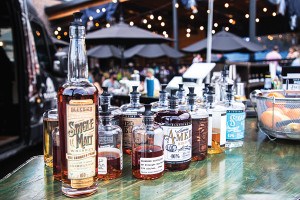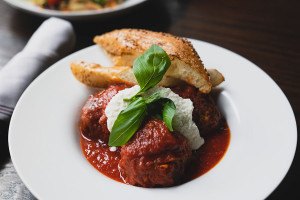A Coffee Miser Goes Shopping, Part 2: Whirley-Pops, Michele Bachman, Colombian Guerillas and a $7 Pound of the Best Coffee Ever
Toward the end of my fling with ultra-fancy coffee beans, I hit Kaffa Crossing in West Philly for an Ethiopian lunch. I left with a small bag of green, unroasted coffee beans whose origin was Ethiopia, by way of a “big burlap sack in New York.” All I had to do, the man at the counter assured me, was put them in a pan and shake them around until they looked done.
I noodled around on the Internet for a while, got pumped up about buying a home roasting machine, had an imaginary conversation with my wife about the prudence of dropping $300 on a smoke-belching kitchen appliance (I already knew what my inner miser would say), and then went home and fired up my wok.
Unless you have the wrist strength of Rafael Nadal, or a post Pee-wee’s Playhouse Paul Rubens, this turns out to be a brutal way to get your daily caffeine fix. Coffee beans having always to be in motion so as not to burn, I shook the wok, capped with the heavy lid of my indispensable rondeau, for 10 excruciating minutes while wondering how to factor the physical-therapy costs of carpal tunnel syndrome into the cost of my coffee. But after a decent amount of pain and solid amount of smoke, the beans looked right. I waited a day to let them outgas the carbon dioxide that’s a byproduct of roasting, then made coffee.
They didn’t smell like blueberries, but the grounds yielded a cup that had a quality that was hard to pin down. It wasn’t the best coffee I’d ever had, but it was good, and seemed somehow more alive than even the stuff I’d lately gotten used to. I assumed this was attributable to the fact that it had been roasted so recently. By all accounts, the moment you finish roasting your coffee the clock begins ticking on its ruination. For about a day the escaping carbon dioxide keeps flavor-attacking oxygen at bay, but from there on out it’s like the Solyndra scandal: it gets worse and worse, with no end in sight, until all of a sudden you wake up in night sweats wondering if Michele Bachman could actually become president.
I was down with home-roasting, then, but there had to be a better way.
So I picked up some unroasted Kenya AAs from Fante’s ($9.89 per pound) and borrowed my neighbor’s air popcorn popper. No manual labor, no coffee residue on my wok, and the promise of an even roast as long as I wasn’t shooting for ultra-dark.
And yet, not a method to be recommended for people with anxiety, inadequate fire insurance, or functioning ears, because let me tell you, listening to an air popper whine for 20 minutes while the plastic shield singes your fingers is not a pleasant endeavor, especially when your three-year-old wants to know when the popcorn’s going to be ready.
Nevertheless, the coffee was a step better than the wok-fired stuff, so there was no reason not to keep pressing forward. Just not with an air popper. (Thanks, Jeff! You can have it back now. I hope you like coffee-scented popcorn!)
Which brings us—allowing for a time-compressing montage sequence in which I order a Whirley-Pop from Amazon and seven pounds of unroasted micro-lot coffee to be shipped from Sweet Maria’s in Oakland—to yesterday morning.
Roasting in a Whirley-Pop involves a little labor, but it’s minimally taxing and actually kind of soothing. I’d discovered that happy fact with some more beans from Fante’s. But Fante’s, wonderful though it is, only has about half a dozen varieties to choose from, and none of them come with information about when the beans were harvested, how they were processed, or any of that other jazz that you get with Counter Culture (or Stumptown, etc.).
Not so with Sweet Maria’s. Now here’s an outfit made for my inner miser. Did I want an Ethiopia dry-process Bench Maji Biftu, from Gesha estate’s June 2011 crop, or the Dumerso Cooperative’s August 2011 wet-process Yirgacheffe? Or a dry-hulled Sumatra? Or some Colombian beans grown on a mountain that was until recently surrounded by FARC guerillas? And Sweet Maria’s must hate making money, because they charge even less than Fante’s. Inclusive of shipping, my seven pounds of beans averaged $7.20 per pound.
Now, roasted beans weigh less than green ones—the moisture having been driven out of them. (That, incidentally, is one reason why in deep pre-Starbucks history, light roasts were long favored in these parts; sellers who charged by weight made more money off beans that retained a comparatively higher moisture content.) So comparing the price of green beans to roasted ones isn’t quite fair. But that said, roasting only reduces a bean’s weight by about 20 percent, so the math still passed muster with my inner miser.
More importantly, these beans flat-out rocked my entire olfactory complex. I roasted the dry-process Bench Maji Biftu ones, ground them up, and there, like a friend in a foreign country that you never thought you’d see again, was that aroma of blueberries wafting up from the grinder. I wetted the grounds, filled my mug, threw window shades wide, and sipped. And there it was, the best coffee a cheapskate—or anyone else, really—could ask for.
Or is it? If I could nix the UPS line item from my bill, I’d come down another dollar a pound. So it’s time to step up, Philly foodies. Why should some outfit in Oakland be getting my business? Now that our micro-batch coffee roasting scene is starting to ramp up, doesn’t anybody want to diversify their business with a little green-bean wholesale operation on the side?
I’ll be your first customer.
A Coffee Miser Goes Shopping, Part 1 [Foobooz]


